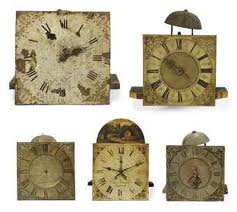In the U.S. one’s ability of finding clock repair technicians to service movements is common. Most have either little or no training at all. They learned their skills, good or bad from hanging around a clockmakers shop off and on over the years. In general they are able to get mechanisms running sometimes in jury-rigged fashion and also having no regard for maintaining the consistency of brass surfaces or excess removal. Many trained clockmakers in the states, although some having gone through a training program are not used to working on English, French or more sophisticated mechanisms and those with ancillary trains.

Our conservators are professionally trained at the N.A.W.C.C. School of Horology, the B.H.I. (British Horological Institute) and West Dean College, UK. Our entire premise is:
- Preserving origins of brass and steel surfaces for sheen and scratch patterns, or returning them to this state when excessively altered
- Sympathetically repairing components, keeping as much of the original metal as possible
- Cleaning mechanisms by hand, not using abrasives, ammoniated solutions or ultra-sonic baths
- Maintaining a code of ethics (BHI) for horologists which also deals with customer relations, records and documentation
- Using the appropriate type, location and amount of lubrication needed
- Restoration of brass clock dials, utilizing sympathetic cleaning on gilded surfaces, cleaning dial surfaces without removing any microscopic surface, traditional wax-filling, engraving, heat bluing of hands and brightening silver surfaces rather than to remove and then renew it
- With regards to painted dials, the client must be made aware of the following:
- 1. History and provenance of clock2. Difference between dial conservation and restoration3. Make clear the nature of the work to be undertaken and to provide an estimate4. Restorer must record all details and markings5. In no circumstance will we invent a makers name, if nothing is visible
6. We will not upgrade any different functioning in mechanisms or remove any past upgrades that are estimated to be over 100 years old
